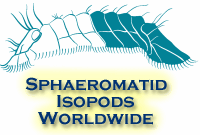| Abstract |
Variation in the rate at which parasitic gnathiid isopod juveniles emerged from the benthos at Lizard Island, Great Barrier Reef, Australia, was examined (I) every 4 or 8 h throughout the day and night over a 24 h period, (2) over a 12 h period during the day or night, and (3) during different lunar phases (weeks). The number of gnathiids sampled per 4 or 8 h was low, with only 30% of the traps containing gnathiids and the abundance ranging from 0 to 3 gnathiids m(-2). The number of gnathiids that emerged over 12 h, in contrast, ranged from 0 to 36 m(-2). During the third and fifth weeks sampled, more gnathiids emerged during the day than at night. This coincided with the full moon and new moon. Most gnathiids that emerged from the reef during the day (98 %) had not fed, in contrast to those sampled at night (71%). Of the gnathiids with no engorged gut, most (97 %) of those collected during the day were small (II. mm) compared to those collected at night (19%), the latter being mostly >1 mm. Of the gnathiids with an engorged gut, most were sampled at night (83 %) and 97 % were >1 mm in size. These percentages suggest differences in the emergence behaviour among Life stages or species of gnathiids. This study, which shows that gnathiids do emerge during the day and supports other studies showing that gnathiids also attack fishes during the day, has important implications for understanding the role of cleaner fish and their main food source, gnathiids, as it shows there is a constant source of gnathiids emerging from the reef during the day and night in search of hosts. |

















